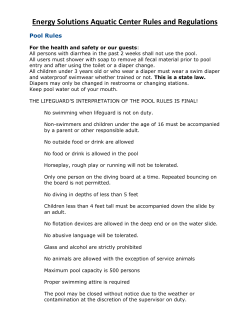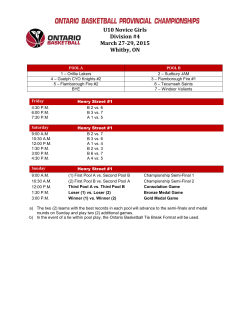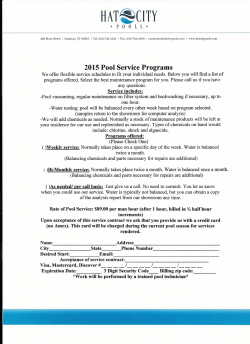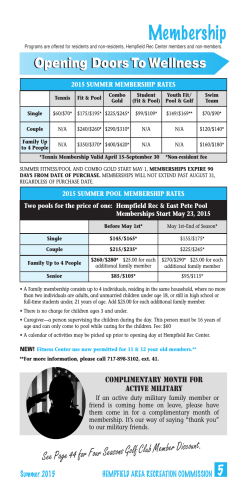
DHS Newsletter - June 2015
Child Care Newsletter Can I smoke at my home? Iowa Department of Human Services June 1, 2015 Kids in Cars Summer is upon us! Please keep children safe in vehicles. According to Safercar.gov, in 2013, 44 children died of heatstroke in the U.S. and children are at a higher risk than adults from dying from heatstroke in a hot vehicle. A child’s temperature rises 3-5 times faster than that of an adult. Top Tips from Safekids.org Reduce the number of deaths from heatstroke by remembering to ACT. A: Avoid heatstroke-related injury and death by never leaving your child alone in a car, not even for a minute. And make sure to keep your car locked when you’re not in it so kids don’t get in on their own. C: Create reminders by putting something in the back of your car next to your child such as a briefcase, a purse or a cell phone that is needed at your final destination. This is especially important if you’re not following your normal routine. T: Take action. If you see a child alone in a car, call 911. Emergency personnel want you to call. They are trained to respond to these situations. One call could save a life. Volume 1, Issue 5 CCDF Reauthorization In November 2014, President Obama signed the Child Care and Development Block Grant (CCDBG) Act of 2014 into law. This reauthorizes the federal law that states must follow to receive funds for our child care programs. The federal law had not been updated since 1996 and makes significant advancements to: support the safety of children; establish policies for the state’s Child Care Assistance program that are more family-friendly; and ensure parents and the public have more accessible and clear information about the child care choices available to them You are likely wondering how this affects you, as a child care provider. We, as a state, are in the early stages of understanding the many requirements of the new law and will be providing more information directly to you in the months ahead. The changes take place over the next 3 years, with the majority of the changes not occurring until October 2016. Examples of the new requirements that the state has to implement include: having rules that address ten key health and safety standards; having new providers attend training on the health and safety standards; expanding the background checks the state currently conducts to include additional federal checks; and assuring that the staff who monitor your home or center have training on the requirements you must meet. All of the details to implement the new requirements have not been decided. We are committed to ensuring that you, as providers, have ample opportunity to provide input to us, review recommendations as they are developed, and provide us feedback on ways we can best implement the law and support you as a provider in meeting the new requirements. We will use this newsletter, among many other communication strategies, to keep you informed as this work continues. The key to our success will be dependent, in large part, on the child care providers who serve our youngest children and families. Please see the below link for more information www.acf.hhs.gov/programs/occ/ccdf-reauthorization June 1, 2015 1 UPDATE TO RULES AND REGULATIONS ChildNet In early 2015, I took the opportunity to participate in ChildNet training and think it is a wonderful training and a great opportunity to improve your child care program and increase your chances of success with your child care business. While participating in this training, I also got to meet some amazing local child care providers that seem to really care about children and quality care! ChildNet is a 25-hour training designed specifically for child care home providers and it meets DHS training requirements for 2 years. ChildNet training and subsequent certification also moves you towards eligibility in becoming a Level 2 QRS Provider! There are 10, 2.5 hour modules in the ChildNet series which covers topics that include ethical business practices, appropriate activities, routines and guidance, nutrition, health and safety, and effective communication. POOL OWNERS!!!!! To find more information, see http://www.iowaccrr.org/providers/childnet/ Or to sign up, go to the training registry at https://ccmis.dhs.state.ia.us/trainingregistry/ June 1, 2015 If you administer medications, please be aware that you must record all medications administered to a child. This information must include the name of the medication, the date and time of administration, and the amount given. Example form available here: http://www.idph.state.ia.us/hcci/common/pdf/medicine_rep ort_form.pdf First Aid Kits must include, at a MINIMUM, adhesive bandages, antiseptic cleaning materials, disposable tweezers, and disposable plastic gloves. Combustible materials must be kept a MINIMUM of 3 feet away from furnaces, stoves, water heaters, and gas dryers. Within 10 days, you must report the following to the Department: changes in assistants/substitutes, changes in household membership, address changes, and criminal convictions. Please note that if you are a Category C child care provider or wish to change your registration status, you may not have more than TWO names providers on a registration certificate. A wading pool shall be drained DAILY and inaccessible to children when not in use An above ground or in ground swimming pool that is NOT fenced MUST be covered when not in use. This cover shall meet or exceed ASTM specifications intended to reduce the risk of drowning by inhibiting access to the water by children under the age of 5. An uncovered above-ground pool must be enclosed with an approved fence that is ATLEAST FOUR feet high and non-climbable An uncovered in-ground pool shall also be enclosed with a fence that is ATLEAST FOUR feet high and flush with the ground. If children are allowed to use the pool, get written permission from parents, have rescue equipment readily accessible, provide constant supervision while the pool is in use AND be assured your CPR certification is CURRENT! 2 June 1, 2015 3
© Copyright 2026









